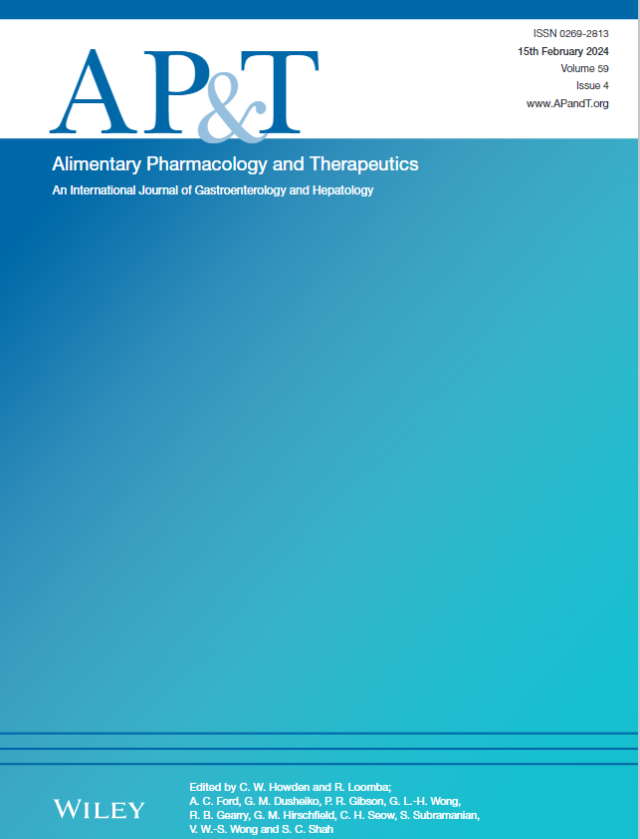Anthropometric Measures and Mortality Risk in Individuals With Metabolic Dysfunction-Associated Steatotic Liver Disease (MASLD): A Population-Based Cohort Study.
IF 6.6
1区 医学
Q1 GASTROENTEROLOGY & HEPATOLOGY
引用次数: 0
Abstract
BACKGROUND/AIMS As the primary anthropometric measure in metabolic dysfunction-associated steatotic liver disease (MASLD), waist circumference (WC) may more accurately reflect the visceral fat distribution than body mass index (BMI). This study aimed to compare the prognostic value of BMI, WC and WC-related indices including waist-hip ratio (WHR), body shape index (BSI) and weight-adjusted-waist index (WWI) in individuals with MASLD. METHODS The study population was derived from four large-scale cohorts: the National Health and Nutrition Examination Survey (NHANES 2017-2020 and NHANES III), the Kailuan Cohort and the UK Biobank Cohort. We evaluated the mortality risk across these measures using multivariate Cox proportional hazards regression and restrictive cubic spline. RESULTS The Pearson correlation coefficient of WC with hepatic steatosis and fibrosis was better than that of BMI. WC [Quartile 4 vs. Quartile 1: HR (hazard ratio) = 1.48 (95% confidence interval (CI) 1.13-1.93)] and WC-related indices [Quartile 4 vs. Quartile 1: WHR HR = 3.21 (95% CI 2.36-4.37); BSI HR = 3.22 (95% CI 2.48-4.17); WWI HR = 4.72 (95% CI 3.36-6.62)], but not BMI [obesity vs. lean: HR = 0.90 (95% CI 0.72-1.12)], indicated a significant mortality risk gradient among individuals with MASLD. The finding was consistent across sex and racial/ethnic subgroups, with external validation supporting the WC-related indices. MASLD and fibrosis prevalence showed a dose-dependent pattern across WC-related index quartiles. Notably, low BMI and high WC-related indices portended the highest mortality risk. CONCLUSIONS WC and WC-related indices are better parameters in prognosticating MASLD than BMI. The BMI-related 'obesity paradox' may be a misnomer resulting from the use of an incorrect metric. WC should be measured more routinely among individuals with MASLD.代谢功能障碍相关脂肪变性肝病(MASLD)患者的人体测量测量和死亡风险:一项基于人群的队列研究
背景/目的:作为代谢功能障碍相关脂肪变性肝病(MASLD)的主要人体测量指标,腰围(WC)可能比体重指数(BMI)更准确地反映内脏脂肪分布。本研究旨在比较BMI、WC及腰臀比(WHR)、体型指数(BSI)、体重调整腰围指数(WWI)等与WC相关的指标在MASLD患者中的预后价值。方法研究人群来自四个大规模队列:国家健康与营养检查调查(NHANES 2017-2020和NHANES III)、开滦队列和英国生物银行队列。我们使用多变量Cox比例风险回归和限制性三次样条评估了这些指标的死亡风险。结果WC与肝脂肪变性、肝纤维化的Pearson相关系数优于BMI。WC[四分位数4 vs四分位数1:HR(风险比)= 1.48(95%可信区间(CI) 1.13-1.93)]和WC相关指数[四分位数4 vs四分位数1:WHR HR = 3.21 (95% CI 2.36-4.37);Bsi hr = 3.22 (95% ci 2.48-4.17);WWI HR = 4.72 (95% CI 3.36-6.62)],但BMI[肥胖vs.瘦:HR = 0.90 (95% CI 0.72-1.12)]表明MASLD患者之间存在显著的死亡风险梯度。这一发现在性别和种族/民族亚组中是一致的,外部验证支持wc相关指数。MASLD和纤维化患病率在wc相关指数四分位数上呈剂量依赖模式。值得注意的是,低BMI和高wc相关指数预示着最高的死亡风险。结论swc和wc相关指标是较BMI更好的预测MASLD的指标。与bmi相关的“肥胖悖论”可能是由于使用了不正确的度量标准而造成的用词不当。在MASLD患者中应更常规地测量WC。
本文章由计算机程序翻译,如有差异,请以英文原文为准。
求助全文
约1分钟内获得全文
求助全文
来源期刊
CiteScore
15.60
自引率
7.90%
发文量
527
审稿时长
3-6 weeks
期刊介绍:
Alimentary Pharmacology & Therapeutics is a global pharmacology journal focused on the impact of drugs on the human gastrointestinal and hepato-biliary systems. It covers a diverse range of topics, often with immediate clinical relevance to its readership.

 求助内容:
求助内容: 应助结果提醒方式:
应助结果提醒方式:


